Bakewell
OS Grid ref:- SK2168
The picturesque market town of Bakewell, known as the 'Capital of the Derbyshire Dales', lies on the River Wye and is the only town to be included within the Peak District National Park.
The River Wye at Bakewell
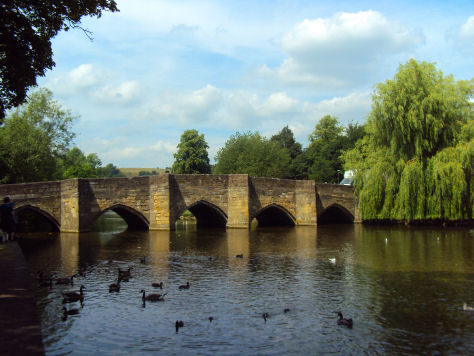
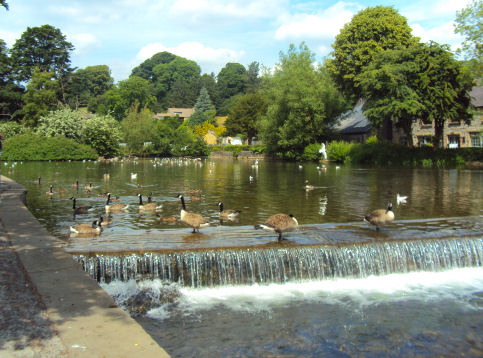
Bakewell has a long history dating back to the Anglo-Saxon era, in 924 the Saxon King Edward the Elder ordered a fortified borough to be built here. Bakewell is recorded in the Domesday Book of 1086, where it is referred to as ‘Badequella’, meaning Bath-Well, in reference to the warm springs in the area. William the Conqueror granted the manor of Bakewell to William Peverel, who may have been his illegitimate son.
The immaculately maintained Bath Gardens overlooking Rutland Square, make for a pleasant stroll, the gardens won the East Midlands in Bloom 2010 Green Space Award for Horticultural Excellence within Parks and followed this up with the Judges' Award for Quality and Display in 2011. The gardens used to belong to Bath House, which was built on the site of a natural spring by Duke of Rutland in 1697. This was for years the home of the famous Derbyshire geologist, White Watson, who acted as a bath superintendent. Within the gardens is an ornamental fountain. Water for this is supplied from the Warm Well over which Bath House was originally built.
Bath Gardens, Bakewell
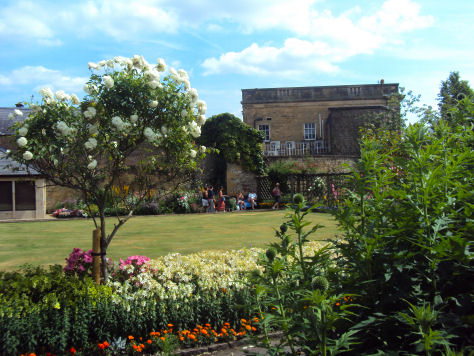
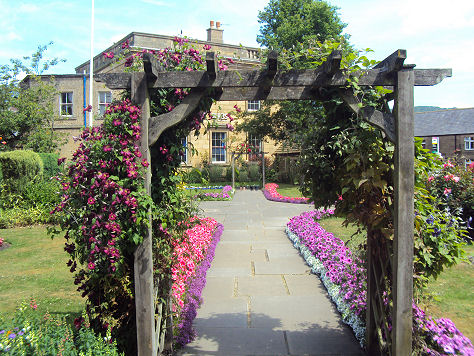
Bakewell is perhaps best known for a confection which was made totally by accident, when in the nineteenth century, Mrs Greaves, a cook at the Rutland Arms was baking a jam tart but misunderstood the recipe and poured egg mixture over the jam instead of mixing it in the pastry to create the first Bakewell Pudding. Today most visitors to the town sample this culinary delight, Bakewell Puddings can be purchased at several establishments across the town, which all claim to possess the original unique recipe.
The Bakewell Pudding Shop makes for an interesting place to visit, with information panels and exhibits to view. Tours of the Bakehouse can be arranged for parties after closing time.
Bath Gardens and the Bakewell Pudding Shop
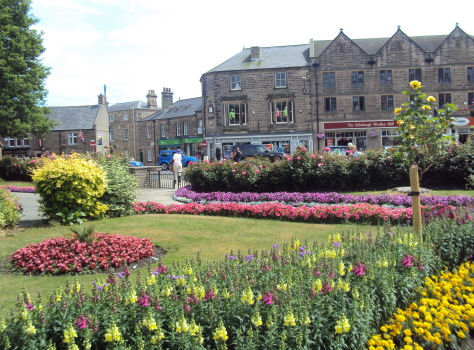

The Old House Museum is housed in a building which dates back to the Tudor era, it was originally built in 1534 by Ralph Gell of Hopton Hall, its owners down the centuries have included Sir Richard Arkwright and the Duke of Devonshire. It is now a local history museum and in the care of the Bakewell Historical Society.
The Rutland Arms, a large and elegant Georgian Coaching Inn, stands on the corner of Rutland Square. One of the inn's first guests was the novelist Jane Austen who stayed there in 1811, whilst writing 'Pride and Predudice' and based the fictional town of Lambton in the book on her impressions of Bakewell.
Other buildings of historic interest in the town are Bagshaw Hall, the former home of Thomas Bagshaw, a solicitor, which dates from the seventeenth century. The Old Town Hall, was built in 1709 and is situated in King Street, the building now houses an antiques shop, but between 1826 and 1874 it was occupied by Lady Manners School.
The Almhouses of the Hospital of the Knight of St John, was founded by the Manners family, Dukes of Rutland, who maintained the buildings until 1920. The present row of cottages dates from 1709, built behind the then Town Hall to accommodate six inmates. An earlier building, dating to 1602 was provided by John Manners after an initiative by Bess of Hardwick, with the approval of Queen Elizabeth I.
One of the best-known landmarks in the Peak District, the picturesque five arched bridge spanning the River Wye was built in around 1300 and is amongst the oldest bridges in England, although it has been widened since then. Attractive riverside walks lead in both directions from the bridge. Upstream through the water meadows is Holme Bridge, an ancient stone structure used by Peak District packhorses for centuries.
All Saints Church
All Saints Church dates back to 920 AD and occupies a prominent position high on the hillside.
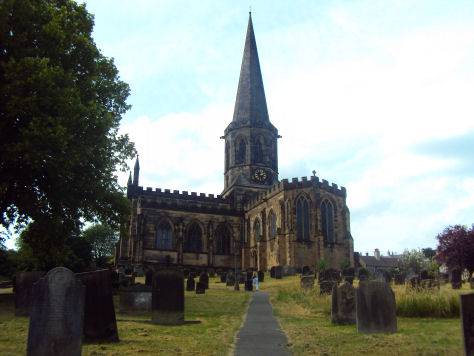
The church has both Norman and Saxon stonework but the main fabric of the building dates to the thirteenth century. In and around the church porch there are round 40 Anglo Saxon stones, the largest collection in the world, which were found during restoration work on the church in the 1840s and some ancient stone coffins.
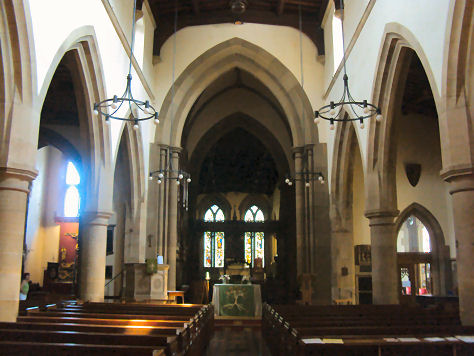
The churchyard contains two ninth century Saxon crosses. The Beeley Cross, located just to the east of the entrance, was unearthed in a field near Beeley, although only its base and the lower part of the shaft survive, it stands over five feet high and is carved on all four faces. The Bakewell Cross which stands in an enclosure on the north-east side of the church, measures eight feet high, it was carved in the seventh or eighth century and depicts a number of scenes including one of the Annunciation.

All Saints Church contains many monuments including those to the Vernon family, who owned the town of Bakewell from 1502 before it passed by marriage to the Manners family in 1567. In the Vernon Chapel are several magnificent tombs, including that of John Vernon of Haddon Hall, who died in 1477 and of Sir George Vernon and his two wives. Sir George was known as 'The King Of The Peak' and died in 1567, but his main claim to fame was that he was the father of Dorothy Vernon, who famously eloped with Sir John Manners. There is also a monument to their son, George Manners and his wife Grace.
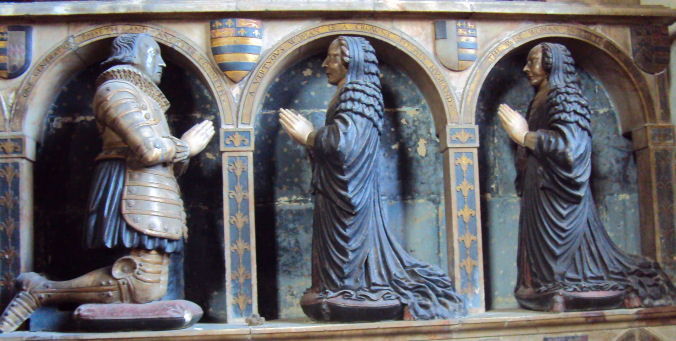
The medieval tomb of Sir Thomas Wendesley, who was killed in the Battle of Shrewsbury in 1403, has an inscription on the helmet, ‘IHC Nazaren’, an abbreviated code for “Have mercy on me, Jesus of Nazareth”. Outside the chapel is the smaller alabaster monument of Sir John Foljambe (died 1377) and his wife.
Nearby places of interest
Chatsworth House known as "The Palace of the Peak" is the country seat of the Duke of Devonshire and is situated on the banks of the River Derwent, 3.5 miles to the northeast of Bakewell in the heart of the Peak District National Park.
Haddon Hall is an architectural gem. Dating back to the eleventh century, the hall has been described as "the most complete and most interesting house of [its] period", it is the finest example of a medieval manor house currently in existence in England.
Lathkill Dale, a Peak District beauty spot in the truest sense of the word, is one of Britain's finest limestone valleys, it is situated about 3 miles from Bakewell.
Arbor Low, sometimes referred to as ‘The Stonehenge of the North' is a prehistoric site of unique archaeological and cultural interest.
Monsal Head, a justly famous beauty spot, commands superb views down Monsal Dale and up the Wye Valley.
Dovedale a dramatic limestone ravine, with its impressive rock outcrops and tranquil woodlands is arguably the prettiest and most famous of the dales in the Peak District National Park
